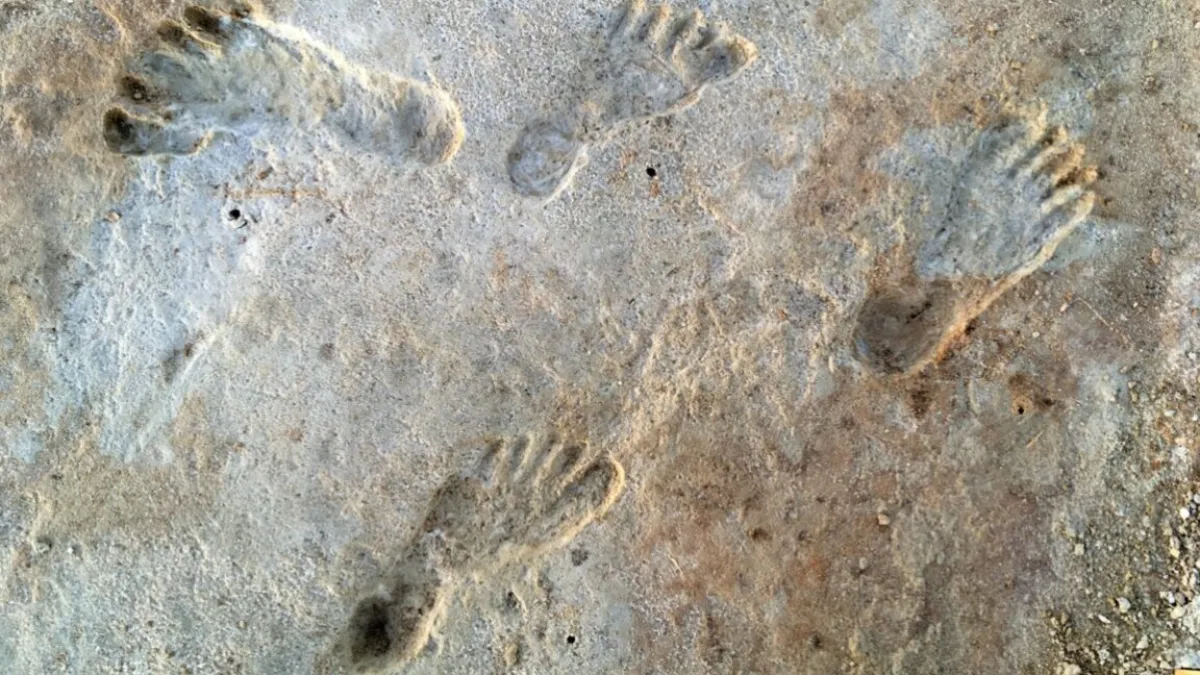
The 2009 discovery of ancient footprints, both human and animal, in the clay and silt layers at White Sands National Park in New Mexico has ignited a heated debate regarding the timeline of human cultures in North America. Prior to this revelation, it was widely believed that the first Americans arrived toward the end of the last Ice Age and were associated with the Clovis culture. This culture is recognized for its distinctive projectile points discovered near Clovis, New Mexico. However, innovative dating methods have suggested that the footprints at White Sands are actually 10,000 years older, raising important questions about the arrival of humans on the continent.
For many years, archaeological evidence indicated that the Clovis people migrated southward through a corridor formed by melting ice sheets between approximately 13,000 and 16,000 years ago. However, newer archaeological findings, such as a site in Florida dating back 14,500 years and stone tools from western Idaho dated to 16,000 years ago, have led researchers to reconsider this narrative. These discoveries suggest that the Clovis people were not the first inhabitants of the Americas and that the earliest Americans may have traveled along the Pacific Coast, evading the ice sheets.
In 2019, a team of researchers led by Bournemouth University archaeologist Matthew Bennett excavated the White Sands area, uncovering a total of 61 human footprints east of Alkali Flat, an area that once served as the bed and shoreline of an ancient lake. As climatic conditions changed over time, the lake's edge fluctuated, leaving behind distinct sediment layers of clay, silt, and sand. Among these layers, seven contained human tracks alongside those of extinct megafauna. Remarkably, some sediment layers even held ancient grass seeds.
The team used radiocarbon dating on seeds found in the layers above and below the footprints. Their 2021 results indicated that the oldest footprints were created after 23,000 years ago, while the most recent were made before 21,000 years ago. This timeframe suggests that humans inhabited what is now New Mexico before the ice sheets isolated the southern part of the continent for several millennia.
Despite these findings, some researchers expressed skepticism, arguing that the aquatic plants analyzed were prone to absorbing ancient carbon from groundwater, potentially skewing the results. To address this, the team conducted follow-up studies, radiocarbon-dating pollen from terrestrial plants sampled from the same layers as the footprints. They also utilized optically stimulated luminescence dating on quartz grains from the clay above the lowest layer of footprints. The 2023 findings further supported their earlier estimates, reinforcing the credibility of their research.
Even with the new data, some critics remained unconvinced, suggesting that the 2023 results might represent maximum ages rather than true ages. In response, co-author Vance Holliday from the University of Arizona and his team chose to radiocarbon-date ancient lakebed and wetlands mud directly linked to the alluvium layers containing the footprints. The results dated the footprints to between 20,700 and 22,400 years ago, which aligns with previous findings. Holliday noted that this total of 55 radiocarbon results across three studies creates a remarkably consistent record that is difficult to dismiss.
One of the criticisms regarding this timeline is the absence of artifacts or settlement evidence from the humans who created the footprints. Holliday suggested that many footprints may have been made along trackways that were traversed quickly, which would explain the lack of artifacts. He emphasized the practicality of hunter-gatherers, who would not likely leave behind debris in places distant from their resource supply.
In conclusion, the discoveries at White Sands National Park continue to reshape our understanding of the timeline of human habitation in North America. With ongoing research and analysis, the footprints serve as a crucial piece of evidence in unraveling the complex history of the continent’s earliest inhabitants.